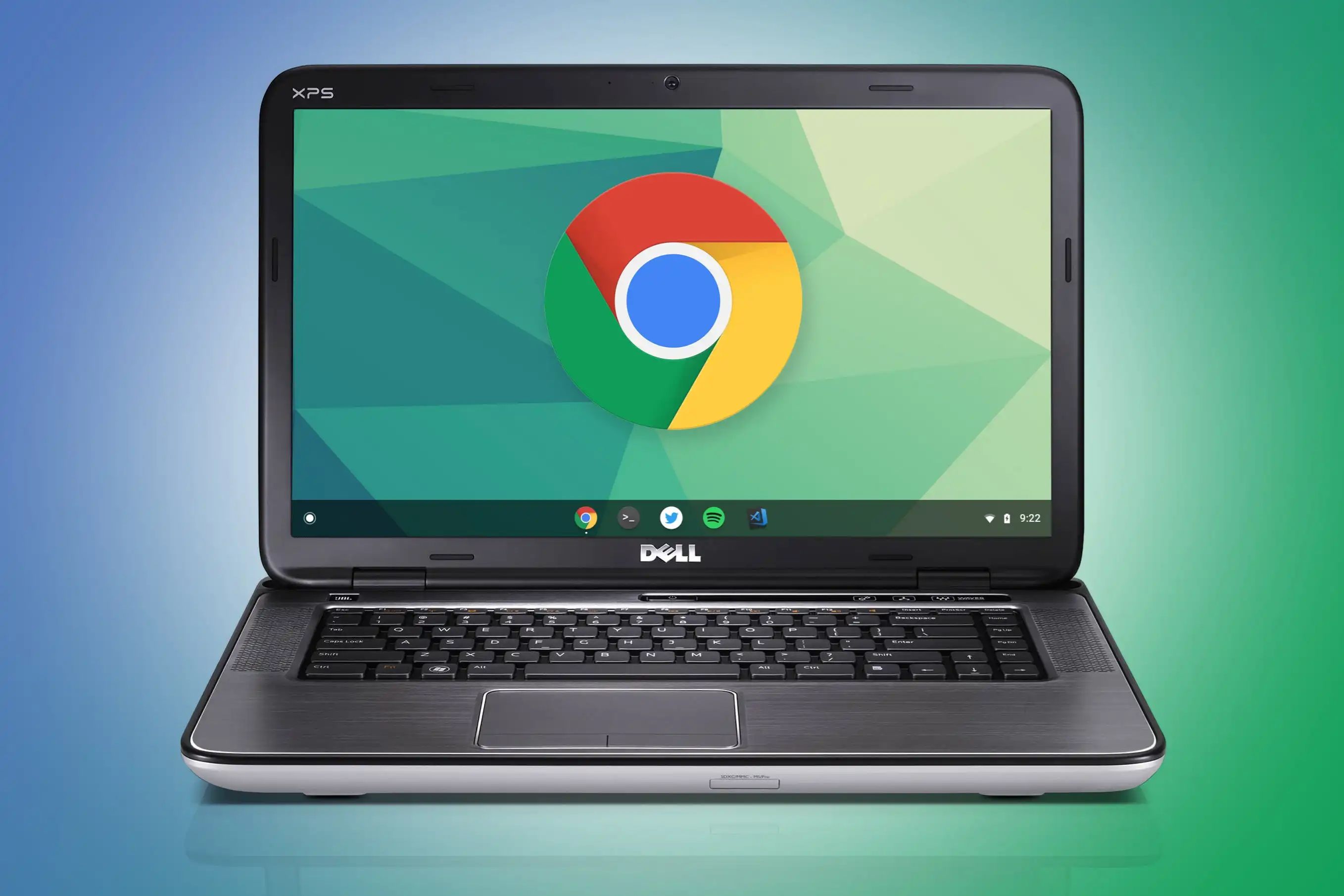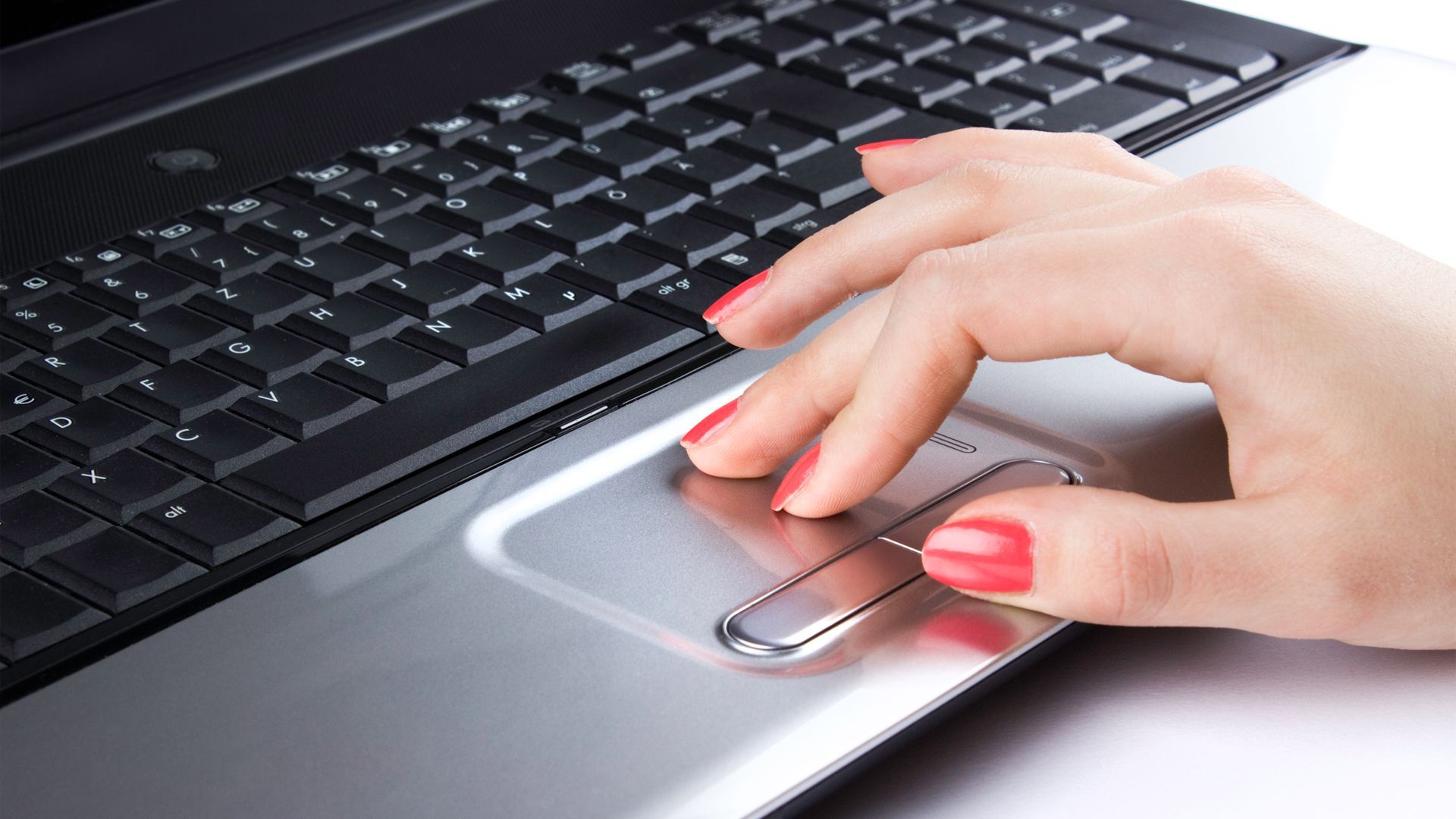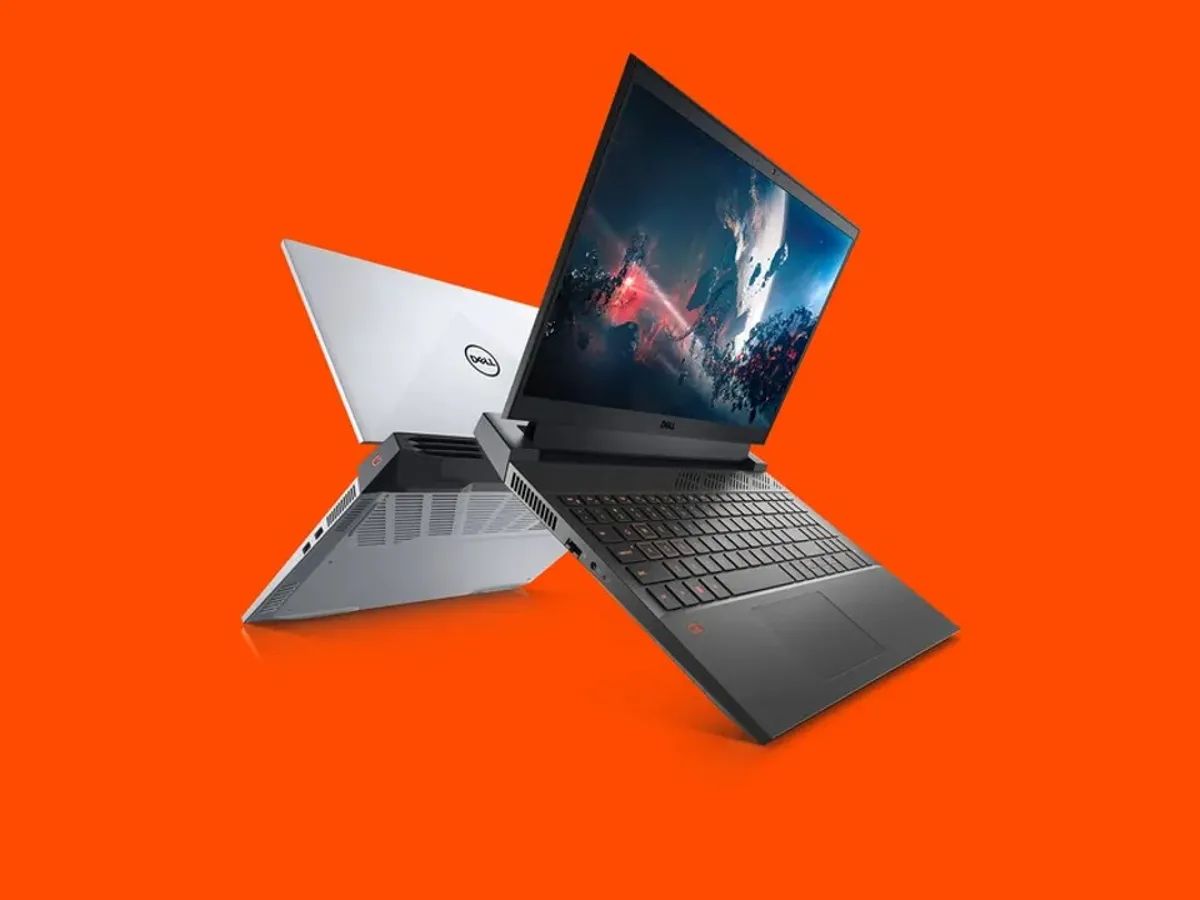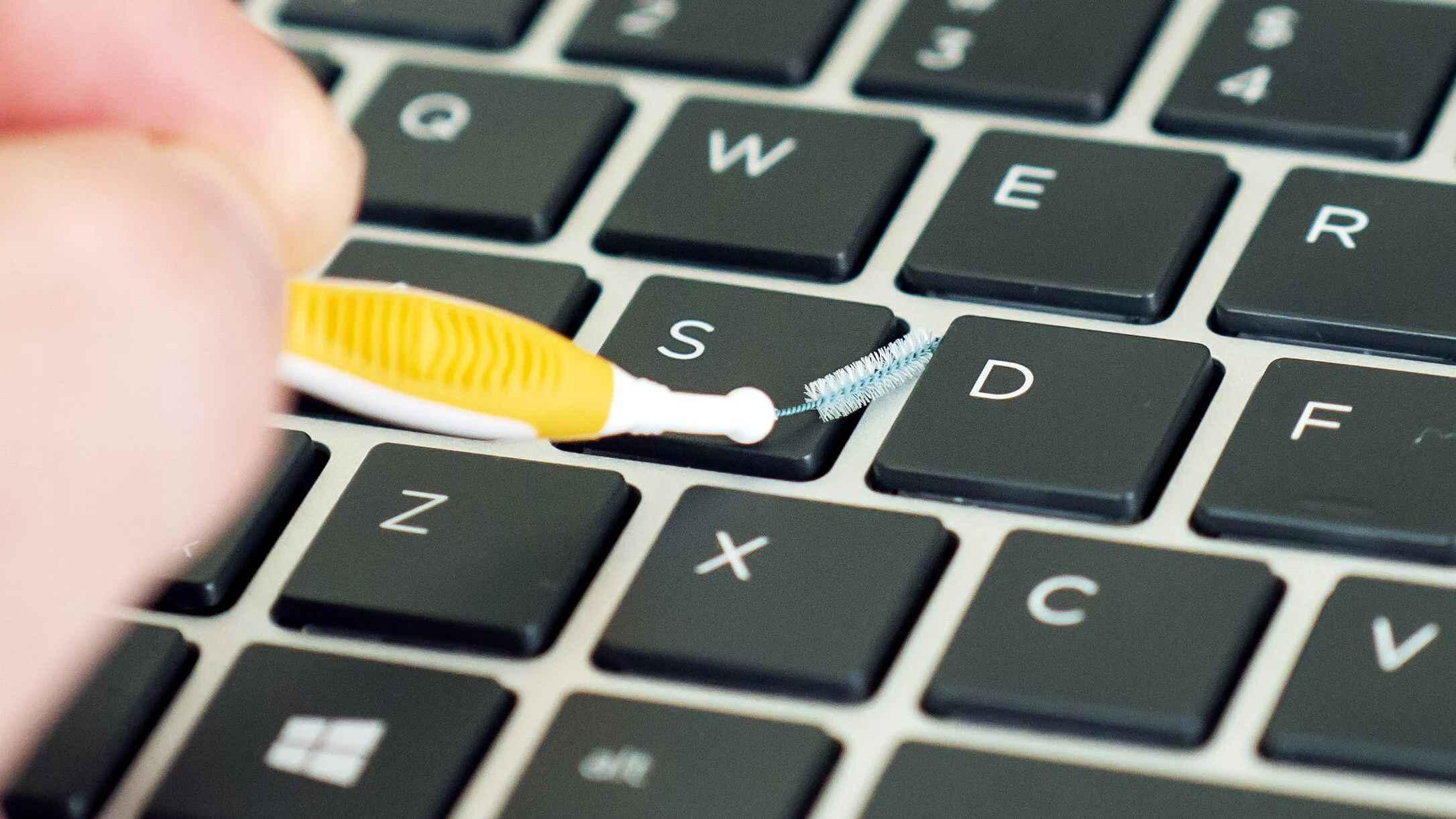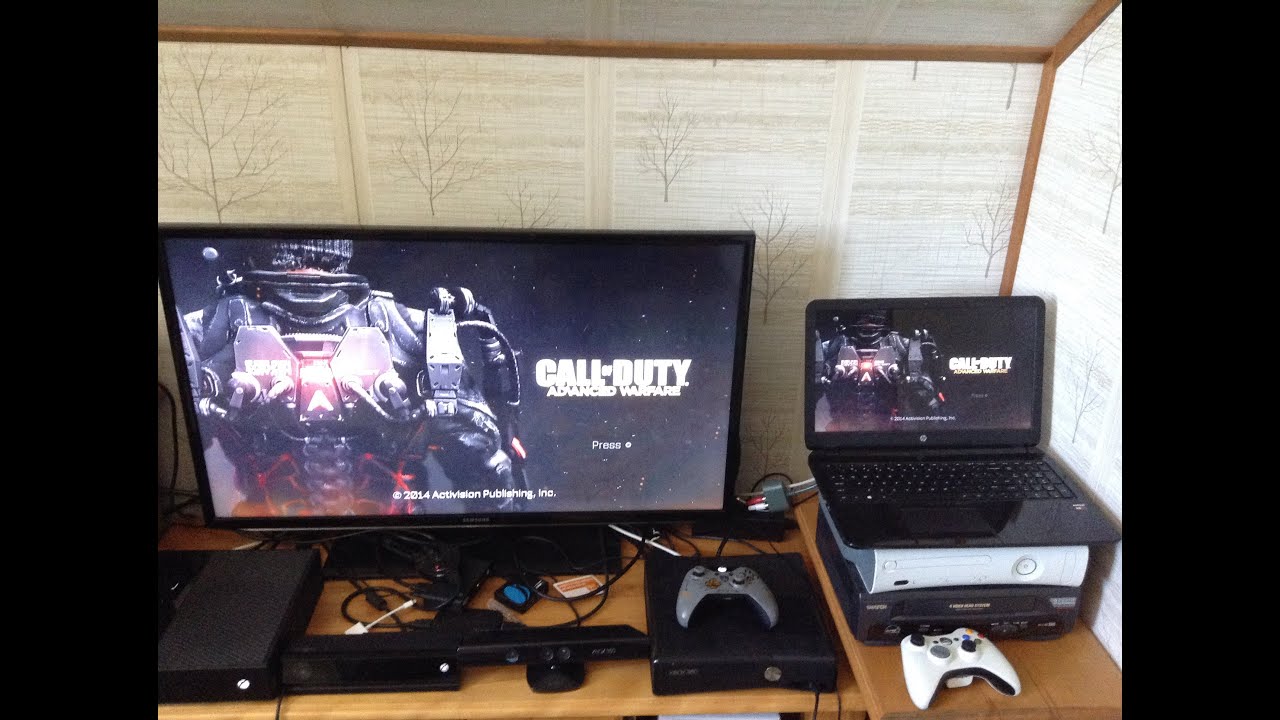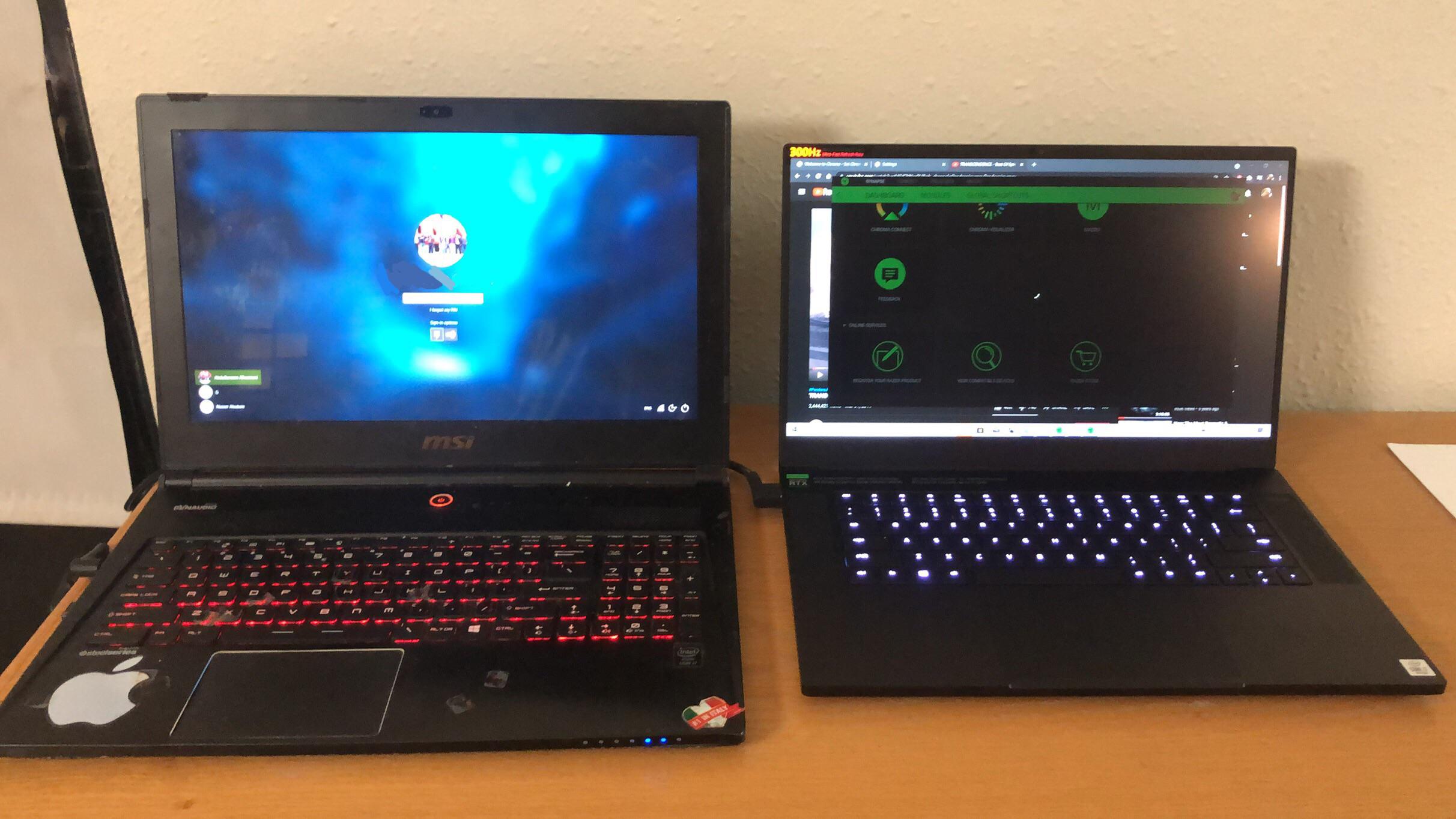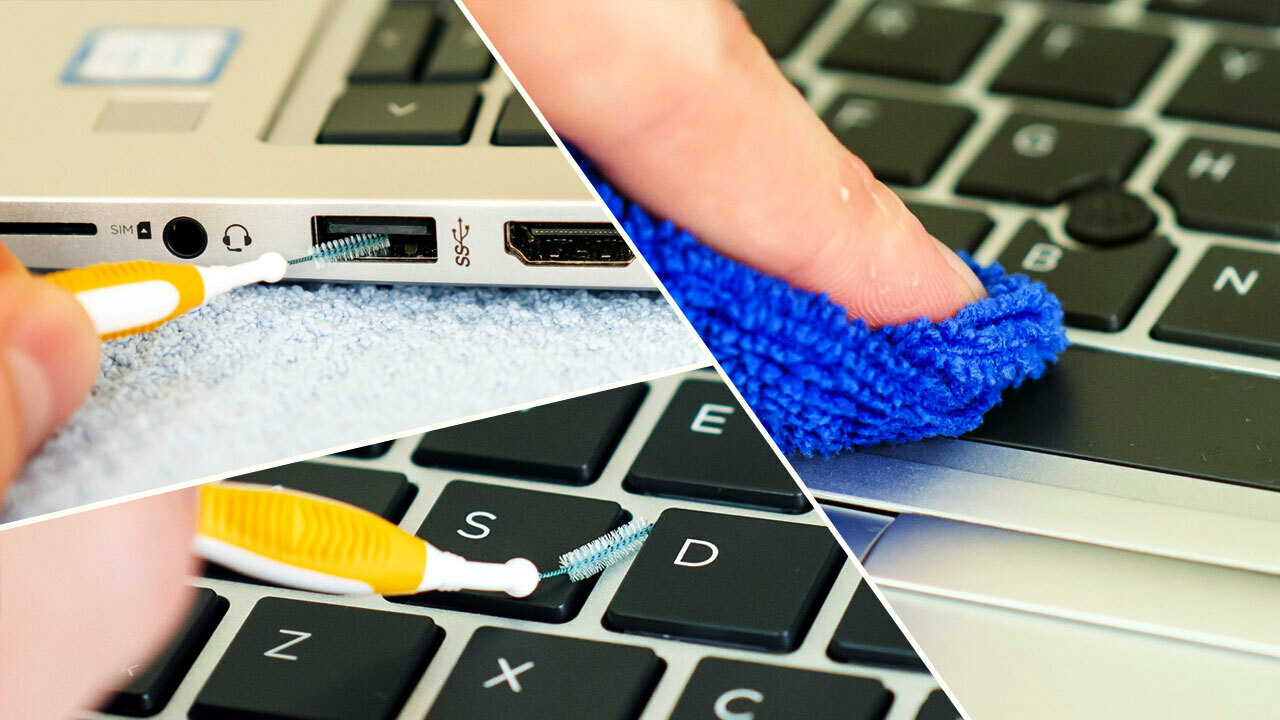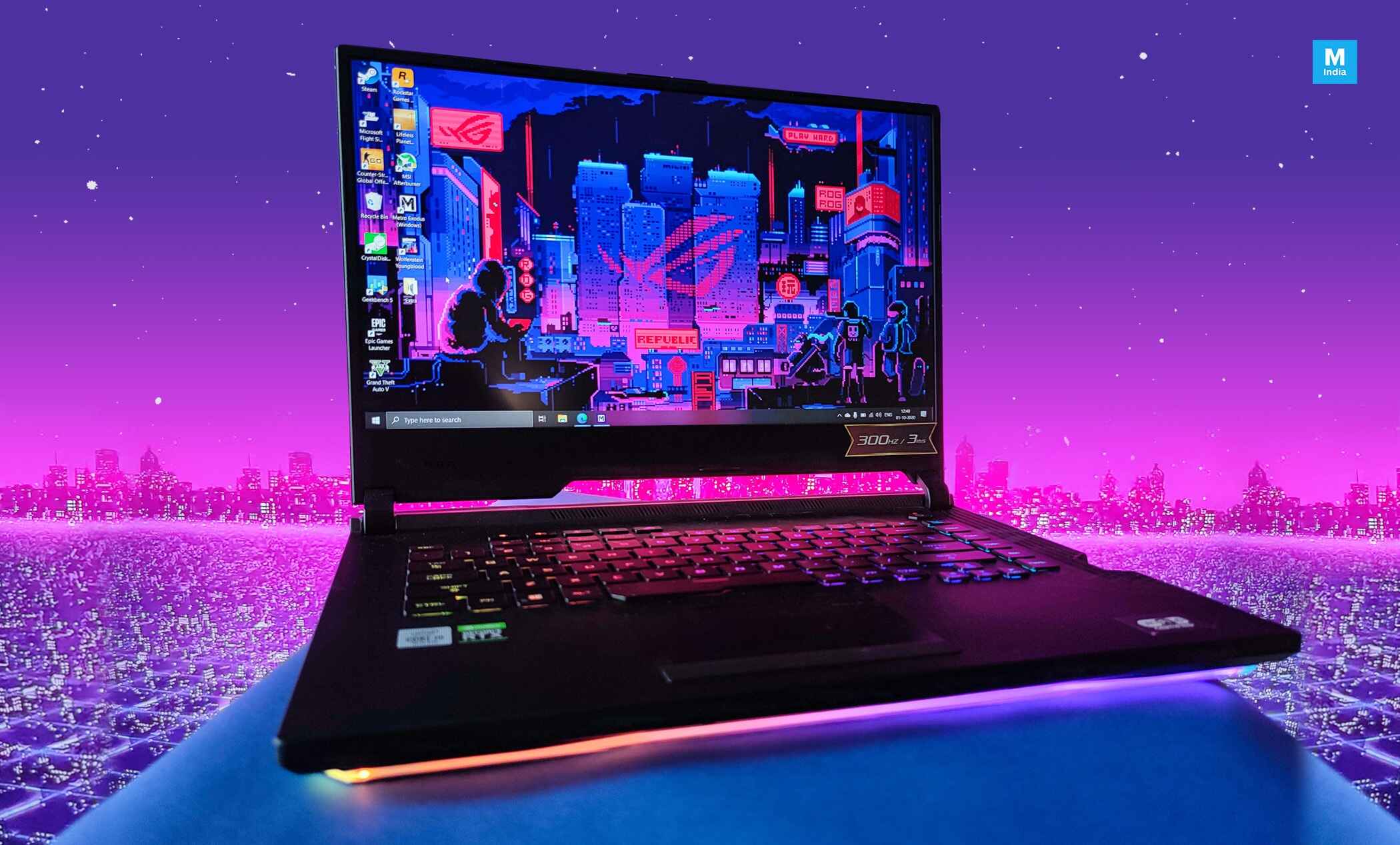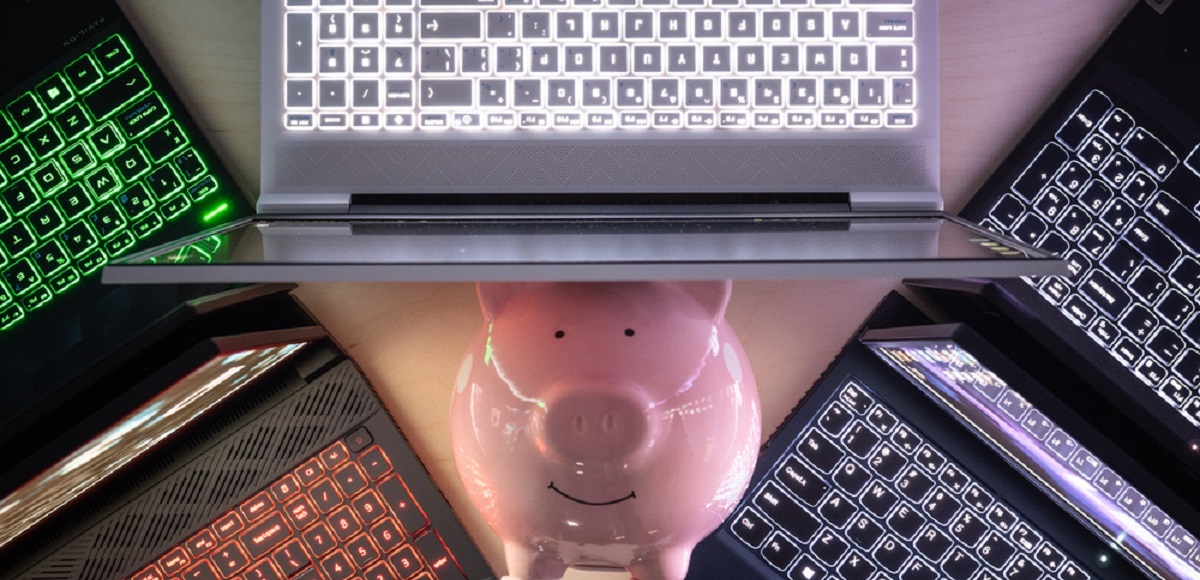Introduction
Welcome to the world of gaming where the thrill of virtual adventures and the rush of adrenaline await. But what if you don’t have a high-end gaming laptop? Don’t worry, because with a few simple tweaks and the right software, you can turn your existing laptop into a gaming powerhouse at no cost!
Many people believe that a dedicated gaming laptop is the only way to enjoy an immersive gaming experience. While it’s true that gaming laptops are designed with powerful hardware and advanced cooling systems, you can still enhance your regular laptop’s performance to handle the demands of modern games.
In this article, we will walk you through a step-by-step process to transform your laptop into a gaming laptop without spending a dime on expensive hardware upgrades. Whether you’re a casual gamer looking to play popular titles or a dedicated gamer craving high frame rates and stunning graphics, these software optimizations will make your gaming experience much more enjoyable.
Before we get started, it’s important to note that these optimizations will help improve gaming performance, but they have certain limitations. If you have a very old or low-end laptop, you may not achieve the same level of performance as a high-end gaming laptop. However, even modest improvements can significantly enhance your gaming experience, allowing you to play games that were previously unplayable or laggy.
So, if you’re ready to take your gaming laptop to the next level, let’s dive into the world of software optimizations and unleash the full potential of your current hardware!
System Requirements
Before we begin the optimization process, it’s important to ensure that your laptop meets the minimum system requirements for running modern games. While we won’t be upgrading any hardware components, it’s still essential to have a laptop that’s capable enough to handle the software tweaks.
Here are the recommended system requirements for turning your laptop into a gaming laptop:
- Processor: A dual-core or quad-core processor with a clock speed of at least 2.5 GHz is preferable. Higher clock speeds and more cores will provide better performance.
- RAM: Aim for at least 8GB of RAM. While some games may be playable with 4GB, having more RAM will allow for smoother gameplay and faster loading times.
- Graphics Card: A dedicated graphics card is highly recommended for gaming. Look for a card with at least 2GB of VRAM and support for modern APIs like DirectX 11 or higher.
- Storage: Ensure you have enough free disk space to install games. A solid-state drive (SSD) will provide faster load times, but a traditional hard drive can still work fine.
- Operating System: Make sure you’re using a recent version of Windows (such as Windows 10) or macOS (such as macOS Mojave or newer).
These are just general recommendations, and the specific requirements may vary depending on the games you wish to play. It’s always a good idea to check the system requirements for each game to ensure compatibility.
Now that you’re familiar with the system requirements, you can proceed with the optimization process and unleash the gaming potential of your laptop. Let’s dive into the first step: updating your graphics drivers!
Step 1: Update Graphics Drivers
One of the essential steps in turning your laptop into a gaming machine is to update your graphics drivers. Graphics drivers are software that allows your operating system to communicate with your laptop’s graphics card, ensuring optimal performance and compatibility with the latest games.
To update your graphics drivers, follow these steps:
- Identify your graphics card: To begin, you need to know the manufacturer and model of your laptop’s graphics card. You can usually find this information in the Device Manager or by visiting the manufacturer’s website.
- Visit the manufacturer’s website: Once you have the details, visit the website of the graphics card manufacturer, such as NVIDIA or AMD.
- Download the latest drivers: Look for the drivers section on the website and locate the appropriate drivers for your graphics card and operating system. Download the latest version of the drivers.
- Install the drivers: Once the drivers are downloaded, run the installer and follow the on-screen instructions to install the updated drivers.
- Restart your laptop: After the installation, it’s recommended to restart your laptop to complete the driver installation process.
Updating your graphics drivers ensures that you have the latest bug fixes, performance improvements, and compatibility enhancements. It can significantly improve your gaming experience by providing better frame rates, smoother gameplay, and fewer graphical glitches.
Remember to periodically check for driver updates and install them to keep your laptop optimized for gaming. Manufacturers often release new drivers to address any issues and maximize the performance of their graphics cards.
With your graphics drivers up to date, you’re ready to move on to the next step: overclocking your GPU to squeeze out extra performance. Buckle up, and let’s dive into the world of GPU overclocking!
Step 2: Overclock GPU
If you want to push your laptop’s graphics card to its limits and extract every ounce of performance, overclocking is the way to go. Overclocking involves increasing the clock speed and voltage of your GPU, allowing it to process graphics faster and deliver better gaming performance.
Before proceeding with GPU overclocking, keep the following points in mind:
- Overclocking may void your laptop’s warranty, so proceed at your own risk.
- Ensure that your laptop has adequate cooling. Overclocking generates more heat, so monitor temperatures and use cooling solutions if necessary.
- Start with small increments and test stability after each tweak. Not all GPUs can be overclocked to the same extent, so monitor for any signs of instability or artifacts.
Here’s a step-by-step guide to overclock your GPU:
- Download GPU overclocking software: There are several overclocking software options available, such as MSI Afterburner, EVGA Precision X, or ASUS GPU Tweak. Choose one that is compatible with your graphics card.
- Install and open the software: Install the software and launch it on your laptop.
- Adjust core clock and memory clock: Increase the core clock and memory clock gradually using the software’s sliders. Start with small increments, such as 10 MHz, and test stability by running a demanding game or benchmarking tool.
- Monitor temperatures: Keep an eye on the GPU temperatures during the overclocking process. If temperatures reach unsafe levels, consider reducing the overclock or improving cooling.
- Stress test for stability: Use a stress-testing tool like FurMark or Heaven Benchmark to test the stability of your overclock. If you encounter graphical artifacts or crashes, dial back the overclock until it becomes stable.
- Save your settings: Once you’ve found a stable overclock, save the settings in the software’s profile. This way, the settings will be applied automatically each time you start your laptop.
Overclocking your GPU can provide noticeable improvements in gaming performance, such as higher frame rates and smoother gameplay. However, it’s important to be cautious and not push your hardware beyond its limits. Always monitor temperatures and revert any unstable overclocks.
With your GPU overclocked and ready to perform, it’s time to move on to the next step: adjusting power settings to optimize gaming performance. Let’s dive in!
Step 3: Adjust Power Settings
Power settings play a crucial role in optimizing your laptop’s performance for gaming. By tweaking the power settings, you can prioritize performance over power savings, ensuring that your laptop’s hardware is running at its maximum potential. Let’s explore how to adjust power settings for optimal gaming performance.
Follow these steps to adjust power settings on your laptop:
- Open the Power Options: Go to the Control Panel or right-click on the battery icon in the system tray and select “Power Options.”
- Select High-Performance mode: In the Power Options window, select the High-Performance power plan. This plan provides maximum performance by minimizing power-saving features.
- Configure advanced power settings: Click on “Change plan settings” next to the High-Performance plan, and then click on “Change advanced power settings.”
- Adjust CPU and GPU settings: In the advanced power settings window, expand the “Processor power management” and “Graphics settings” options. Set the minimum and maximum processor state to 100% and ensure that the graphics settings are set to maximum performance.
- Disable USB Selective Suspend: In the advanced power settings window, expand the “USB settings” option and disable the “USB selective suspend setting.” This prevents USB devices from being suspended and ensures consistent performance.
- Save changes and exit: After adjusting the power settings, click on “Apply” and then “OK” to save the changes and exit the power options window.
By setting your laptop to the High-Performance power plan and maximizing CPU and GPU performance, you ensure that your system operates at its full potential during gaming sessions. Disabling USB selective suspend prevents any interruptions or lag caused by USB devices.
Keep in mind that using the High-Performance power plan may consume more battery power, resulting in reduced battery life. If you’re gaming while plugged into a power source, this shouldn’t be a concern. However, if you’re gaming on battery power, it’s advisable to switch back to a power-saving plan when not using your laptop for gaming.
With power settings adjusted, you’re one step closer to transforming your laptop into a capable gaming machine. Next, we’ll move on to optimizing game settings to maximize performance and visual quality. Let’s dive in!
Step 4: Optimize Game Settings
Optimizing game settings is crucial to achieve a balance between performance and visual quality. Each game offers a plethora of settings that can be adjusted to suit your laptop’s hardware capabilities. By finding the right balance, you can enjoy smooth gameplay without sacrificing visual fidelity. Here’s how to optimize game settings:
- Launch the game: Start the game you want to optimize on your laptop.
- Access the settings menu: Look for the settings or options menu within the game’s interface. This is typically found in the main menu or by pressing a specific key during gameplay.
- Adjust resolution: Lowering the resolution can significantly boost performance. Try reducing the resolution to 1080p or even lower if needed.
- Modify graphics settings: Start by setting graphics presets to a lower value, such as “Low” or “Medium.” If you’re still not satisfied with performance, manually fine-tune individual settings like texture quality, shadows, anti-aliasing, and ambient occlusion. Disable or lower settings that have a high impact on performance but offer minimal visual improvement.
- Disable unnecessary features: Some games have additional features like motion blur, depth of field, or dynamic lighting effects. Disable any unnecessary features that don’t significantly enhance the gaming experience.
- Test and refine: Save your settings and play the game for a while. Monitor the performance and visual quality to ensure a smooth and enjoyable experience. If needed, make further adjustments until you find the right balance between performance and graphics.
Optimizing game settings allows your laptop to efficiently render and display the game without unnecessary strain on the hardware. By reducing the graphics settings, you can achieve higher frame rates and smoother gameplay, resulting in a more immersive gaming experience.
Remember that each game may have different settings and preferences, so it’s important to optimize settings on a per-game basis. Experimental and fine-tuning adjustments may be necessary to find the optimal settings for each specific game.
With your game settings optimized, you’re ready to take the next step in transforming your laptop into a gaming powerhouse. Let’s explore the benefits of using game booster software in Step 5!
Step 5: Use Game Booster Software
Game booster software is designed to optimize your laptop’s performance specifically for gaming. These software applications work by temporarily disabling unnecessary background processes, freeing up system resources, and prioritizing resources for the game at hand. By using game booster software, you can further enhance the gaming experience on your laptop. Here’s how to make the most of game booster software:
- Research and select a game booster: There are several game booster software options available, such as Razer Cortex, Game Fire, and Wise Game Booster. Do some research and select a booster that suits your preferences and requirements.
- Download and install the software: Visit the official website of your chosen game booster and download the software. Follow the on-screen instructions to install it on your laptop.
- Open the game booster: Launch the game booster software and explore its features and settings.
- Enable high-performance mode: Most game boosters have a high-performance mode or gaming mode. Enable this mode to optimize your laptop’s performance for gaming.
- Disable unnecessary processes and services: Game boosters allow you to disable background processes and services that are not required for gaming. This frees up system resources and ensures that the game receives maximum resources.
- Manage startup programs: Some game boosters offer the ability to manage startup programs. Disable any unnecessary programs that launch automatically when you start your laptop.
- Monitor and tweak settings: Game boosters often provide system monitoring features to show real-time CPU, GPU, and RAM usage. Use these monitoring features to identify any bottlenecks and adjust settings as necessary.
- Experiment with additional features: Some game boosters offer additional features like FPS counters, screen recording, and screenshot capture. Explore these features to enhance your gaming experience further.
Game booster software can provide significant performance improvements by optimizing system settings and resources dedicated to gaming. However, keep in mind that the impact may vary depending on your laptop’s hardware and the specific game you’re playing.
It’s important to note that while game booster software can improve gaming performance, they should be used judiciously. Make sure to use trusted software from reputable sources and be cautious when disabling processes and services, as some may be necessary for the proper functioning of your laptop.
With game booster software fine-tuning your laptop’s performance, it’s time to move on to Step 6 and optimize your overall system performance. Let’s dive in!
Step 6: Optimize System Performance
Optimizing your overall system performance goes beyond gaming-specific tweaks and focuses on improving the overall efficiency and speed of your laptop. By optimizing system performance, you can ensure that your laptop runs smoothly, allowing for a seamless gaming experience. Let’s explore how to optimize your laptop’s system performance:
- Update operating system and drivers: Regularly check for updates for your operating system (e.g., Windows or macOS) and drivers. Keeping your system up to date will ensure you have the latest bug fixes, security patches, and driver optimizations, resulting in improved overall performance.
- Scan for malware and viruses: Use a reliable antivirus software to scan your laptop for malware and viruses regularly. Malware and viruses can significantly impact system performance. Remove any threats to optimize your laptop’s performance.
- Clean up your hard drive: Over time, your hard drive may become cluttered with unnecessary files and data. Use disk cleanup tools or applications to clean up temporary files, cache, and unnecessary system files to free up disk space and improve system performance.
- Defragment your hard drive: If you’re using a traditional hard drive (HDD), consider defragmenting it to optimize file access and improve read/write speeds. Solid-state drives (SSDs) do not require defragmentation.
- Manage background processes: Use the Task Manager or a third-party software to manage background processes. Close any unnecessary programs running in the background to free up system resources for gaming.
- Uninstall unused programs: Review the list of installed programs on your laptop and uninstall any applications or games that you no longer use. Removing unused programs can free up disk space and reduce background processes.
- Adjust virtual memory settings: Virtual memory, also known as the page file, can affect performance. Adjust the virtual memory allocation to be managed by the system or manually increase the size for improved performance.
- Upgrade your hardware (if necessary): If your laptop’s hardware is outdated and limiting its performance, consider upgrading specific components. Upgrading RAM or replacing a traditional hard drive with an SSD can provide a significant performance boost.
Optimizing the overall system performance ensures that your laptop operates efficiently, not just during gaming but also for other tasks. By following these steps, you’ll create a smoother and more responsive computing environment, enhancing your gaming experience and beyond.
Now that you’ve optimized your system performance, let’s proceed to Step 7: reducing background processes to further fine-tune your laptop’s gaming capabilities.
Step 7: Reduce Background Processes
When it comes to gaming, reducing unnecessary background processes can significantly enhance your laptop’s performance. Background processes consume system resources, including CPU usage and RAM, which can impact gaming performance. By reducing these processes, you can free up valuable resources and ensure that your laptop is solely focused on delivering an optimal gaming experience. Let’s explore how to reduce background processes:
- Open the Task Manager: Press
Ctrl + Shift + Escor right-click on the taskbar and select “Task Manager” to open the Task Manager. - Identify resource-consuming processes: In the Task Manager, navigate to the “Processes” or “Details” tab. Look for processes that consume significant CPU or memory resources.
- End unnecessary processes: Select the processes that are unnecessary or not related to gaming and click on the “End Task” or “End Process” button. Exercise caution and only terminate processes that you are familiar with and confident are not critical for system functionality.
- Disable startup programs: Navigate to the “Startup” tab in the Task Manager. Disable any programs that automatically start when you boot your laptop but are not essential for gaming or other critical tasks.
- Utilize third-party software: There are also third-party software applications available that can help manage and optimize background processes automatically. These applications can identify resource-hungry processes and temporarily suspend them while gaming.
Reducing background processes minimizes interruptions and allows your laptop to dedicate its resources solely to running the game. By freeing up CPU and memory resources, you can achieve higher frame rates, reduced input lag, and an overall smoother gaming experience.
However, exercise caution when terminating or disabling processes, as some may be critical for system stability or the proper functioning of certain applications. It’s recommended to research processes and consult a professional if you’re unsure about the implications of terminating specific processes.
Now that you’ve reduced background processes, it’s time to take the next step and disable unnecessary visual effects to further optimize your laptop’s gaming performance. Let’s dive in!
Step 8: Disable Visual Effects
Visual effects in your operating system can contribute to the overall aesthetics and usability, but they can also consume valuable system resources. Disabling or reducing visual effects can further optimize your laptop’s gaming performance by freeing up resources that would otherwise be allocated to rendering and displaying visual elements. Let’s explore how to disable visual effects:
- Open the Control Panel: Press the
Windows key + Xand select “Control Panel” from the menu. - Select the System applet: In the Control Panel, find and click on the “System” applet.
- Click on “Advanced system settings”: On the left-hand side of the System window, click on “Advanced system settings” to open the System Properties dialog box.
- Navigate to the “Advanced” tab: In the System Properties dialog box, navigate to the “Advanced” tab.
- Click on “Settings” under the Performance section: Under the Performance section, click on the “Settings” button.
- Select “Adjust for best performance”: In the Performance Options dialog box, select the “Adjust for best performance” option to disable all visual effects. Alternatively, you can manually deselect and disable specific visual effects that you deem unnecessary.
- Apply the changes: Click on “Apply” and then “OK” to save the changes and close the dialog boxes.
Disabling visual effects removes animations, shadows, and other graphical elements that may not be essential while gaming. By prioritizing performance over visual aesthetics, you can allocate more resources towards running the game smoothly and achieving higher frame rates.
Keep in mind that disabling visual effects may result in a less visually appealing user interface. However, you can easily revert back to the original settings when you’re not gaming, or customize the visual effects to strike a balance between performance and aesthetics.
With visual effects disabled, you’re almost ready to immerse yourself in the gaming world. However, before you begin, it’s important to clean up disk space in Step 9 to optimize your laptop’s performance further. Let’s get started!
Step 9: Clean up Disk Space
Over time, your laptop’s hard drive can become cluttered with unnecessary files, temporary data, and other digital debris. Cleaning up disk space not only frees up valuable storage but also improves your laptop’s overall performance. By removing unused files and optimizing your disk, you can create a more efficient system for gaming. Here’s how to clean up disk space:
- Remove temporary files: Use the built-in Disk Cleanup utility in Windows or a third-party software to remove temporary files that accumulate on your hard drive. These files include temporary internet files, system logs, and error reports.
- Delete unused applications: Uninstall applications that you no longer use or need. This not only frees up disk space but also removes any associated background processes that may consume system resources.
- Clear browser cache: Within your web browser settings, clear the cache and cookies. This reduces the amount of temporary data stored in your browser, enhancing performance.
- Organize and delete files: Sort through your files and delete any unnecessary documents, images, videos, or other media files. Consider transferring large files to an external storage device if you want to keep them but don’t need them taking up space on your laptop’s hard drive.
- Empty the recycle bin: Once you’ve deleted files, remember to empty the recycle bin to permanently free up disk space.
- Use disk cleanup tools: Utilize disk cleanup tools that offer advanced features, such as removing duplicate files, analyzing storage usage, or optimizing the disk for better performance.
By cleaning up disk space, you not only gain additional storage for installing and running games but also improve the responsiveness and speed of your laptop. Removing unnecessary files reduces system clutter and allows your laptop to allocate resources more efficiently.
Make it a habit to regularly clean up disk space to maintain optimal system performance. Set a schedule or use automated tools to streamline the process and ensure consistent performance.
With your disk space cleaned up and optimized, you are now ready to experience the full potential of your laptop as a gaming machine. Go ahead, launch your favorite game, and dive into gaming bliss!
Conclusion
Congratulations! You have successfully transformed your regular laptop into a gaming powerhouse through software optimizations. By following the step-by-step guide outlined in this article, you have optimized your graphics drivers, overclocked your GPU, adjusted power settings, optimized game settings, used game booster software, optimized system performance, reduced background processes, disabled visual effects, and cleaned up disk space. These optimizations will enhance your gaming experience and allow you to enjoy smoother gameplay, improved frame rates, and better graphics.
Remember, the effectiveness of these optimizations may vary depending on your laptop’s hardware specifications and the specific games you play. Results may not be equivalent to a high-end gaming laptop, but you will still notice significant improvements that enable you to play games that were previously unplayable or less enjoyable.
Continuously monitor and update your system to keep it optimized for gaming. Keep your graphics drivers up to date, regularly clean up disk space, and adjust your settings as necessary. Stay knowledgeable about the latest software updates and optimizations to maximize your gaming performance.
Now, it’s time to embark on your gaming adventures and fully immerse yourself in the virtual worlds that await you. Enjoy the thrill, excitement, and satisfaction of gaming on your newly transformed laptop!







